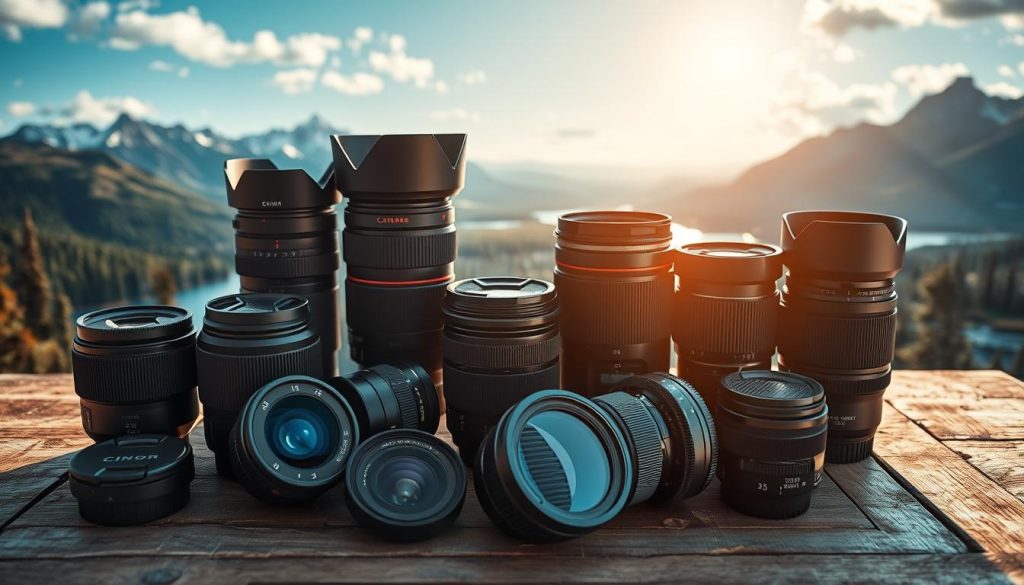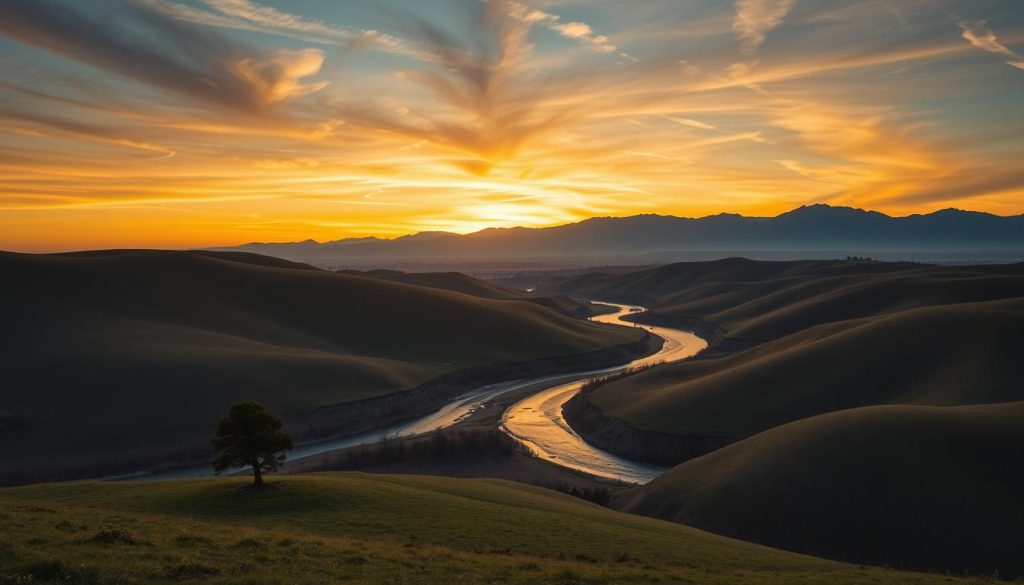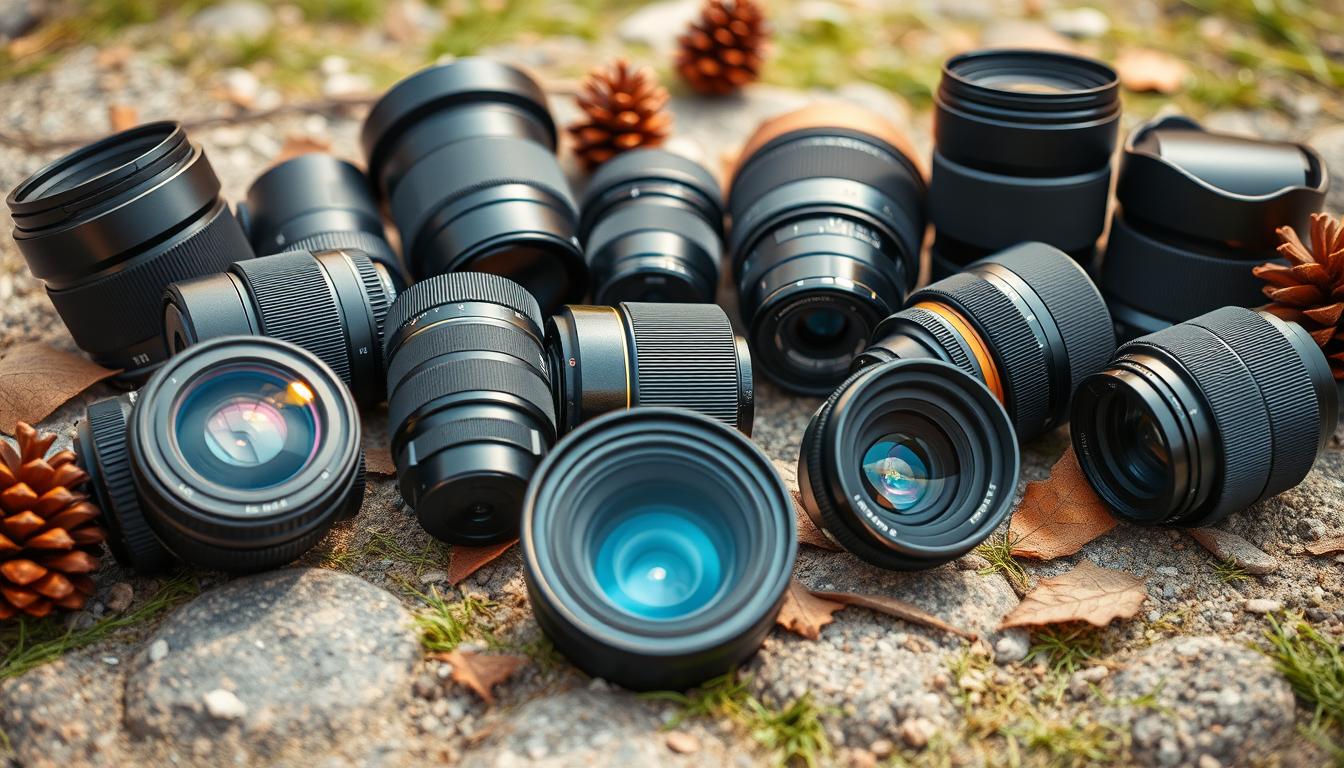I love landscape photography and know how important the right lens is. In this guide, I’ll share my top picks for landscape photography lenses. Whether you’re experienced or new, the right lens can make your photos amazing.
There are lenses for wide views and others for close details. I’ll talk about what makes each lens special. This will help you pick the best lens for your photos.
Let’s explore the secrets of landscape photography lenses. You’ll learn how to take stunning, professional photos that wow everyone.
Unveiling the Secrets of Landscape Photography Lenses
Choosing the right lens is key to amazing landscape photos. We’ll look at wide-angle and telephoto lenses, crucial for landscape shots.
Wide-Angle Wonders for Breathtaking Vistas
Wide-angle lenses are perfect for capturing big scenes. They range from 16mm to 35mm. These lenses show off vast landscapes and skies.
Telephoto Titans for Capturing Distant Details
Telephoto lenses are great for focusing on far-off things. They range from 70mm to 200mm or more. They’re perfect for close-ups of mountains or trees.
Knowing how to use both wide-angle and telephoto lenses opens up new creative ways. It lets photographers make stunning images that show off nature’s beauty.
| Lens Type | Focal Length Range | Ideal for Landscape Photography |
|---|---|---|
| Wide-Angle | 16mm to 35mm | Capturing sweeping vistas and dramatic landscapes |
| Telephoto | 70mm to 200mm or beyond | Isolating and highlighting distant details and features |
The Best Lenses for Landscape Photography: My Top Choices

I’ve tested many lenses for landscape photography. I’ve picked the best ones for stunning images. These lenses are my go-to for capturing breathtaking scenes.
The Canon EF 16-35mm f/4L IS USM is my favorite. It’s a wide-angle zoom lens. It offers sharp images and less distortion, perfect for big views.
The Nikon AF-S NIKKOR 24-70mm f/2.8E ED VR is also great. It has a useful range and top image quality. It’s loved for its flexibility in different shots.
The Sony FE 12-24mm f/4 G is a must-have. It’s an ultra-wide-angle lens. It gives sharp images from edge to edge, ideal for wide shots.
- Canon EF 16-35mm f/4L IS USM
- Nikon AF-S NIKKOR 24-70mm f/2.8E ED VR
- Sony FE 12-24mm f/4 G
These lenses are essential for landscape photography. Choosing the right lens lets you capture the beauty of nature in stunning images.
Crafting Compelling Compositions with the Right Glass

In landscape photography, the lens you choose is very important. It affects how your photos look and feel. Knowing how lens choice impacts composition is key to making great landscape photos.
Lens Focal Lengths and Their Impact on Landscapes
The focal length of your lens is crucial. Wide-angle lenses show the big picture, capturing vast scenes and dramatic views. Telephoto lenses focus on details, making them stand out.
Choosing the right lens focal length is all about experimenting. Find the best match for your scene. This way, you can create stunning photos that grab your audience’s attention.
| Lens Focal Length | Landscape Photography Composition Effect |
|---|---|
| Wide-angle (14-35mm) | Emphasizes the vastness and grandeur of the scene, creating a dramatic and expansive perspective. |
| Standard (35-85mm) | Provides a balanced and natural-looking perspective, capturing the scene as the human eye would see it. |
| Telephoto (85-300mm) | Isolates and highlights specific elements within the landscape, drawing the viewer’s attention to the details. |
Mastering Depth of Field for Striking Landscape Shots

Capturing breathtaking landscape photos is all about depth of field. It guides the viewer’s eye and adds depth to your photos. Here, I’ll share how to master depth of field in landscape photography.
Adjusting your camera’s aperture is key. A wide aperture (low f-number) makes the background blur. A narrow aperture (high f-number) keeps more in focus. This lets you control the depth and dimension of your images.
Understanding hyperfocal distance is also crucial. It’s the closest focus point where everything from half that distance to infinity is sharp. By focusing at this point, you ensure both near and far parts of your scene are sharp.
| Aperture | Depth of Field | Recommended Use |
|---|---|---|
| Wide (low f-number) | Shallow | Isolating a subject, creating a blurred background |
| Narrow (high f-number) | Deep | Keeping the entire scene in focus, maximizing depth of field |
Mastering aperture and hyperfocal distance will help you create stunning landscape photos. The key is to keep trying, observe your results, and refine your skills. This will help you achieve the perfect depth of field for your vision.
Factors to Consider When Choosing Lenses for Landscapes
When picking the right lenses for landscape photos, think about a few key things. The lens’s focal length is very important. It changes how wide or narrow your view is. Wide-angle lenses are great for big views, while telephoto lenses are better for close-up shots.
Also, the lens’s aperture matters a lot. A wider aperture means you can control how sharp or blurry your background is. This is super useful for making your main subject stand out against a soft background.
Don’t forget about image stabilization. Shooting outside can be tricky because of wind or uneven ground. Lenses with image stabilization help keep your photos sharp, even when it’s a bit shaky.

